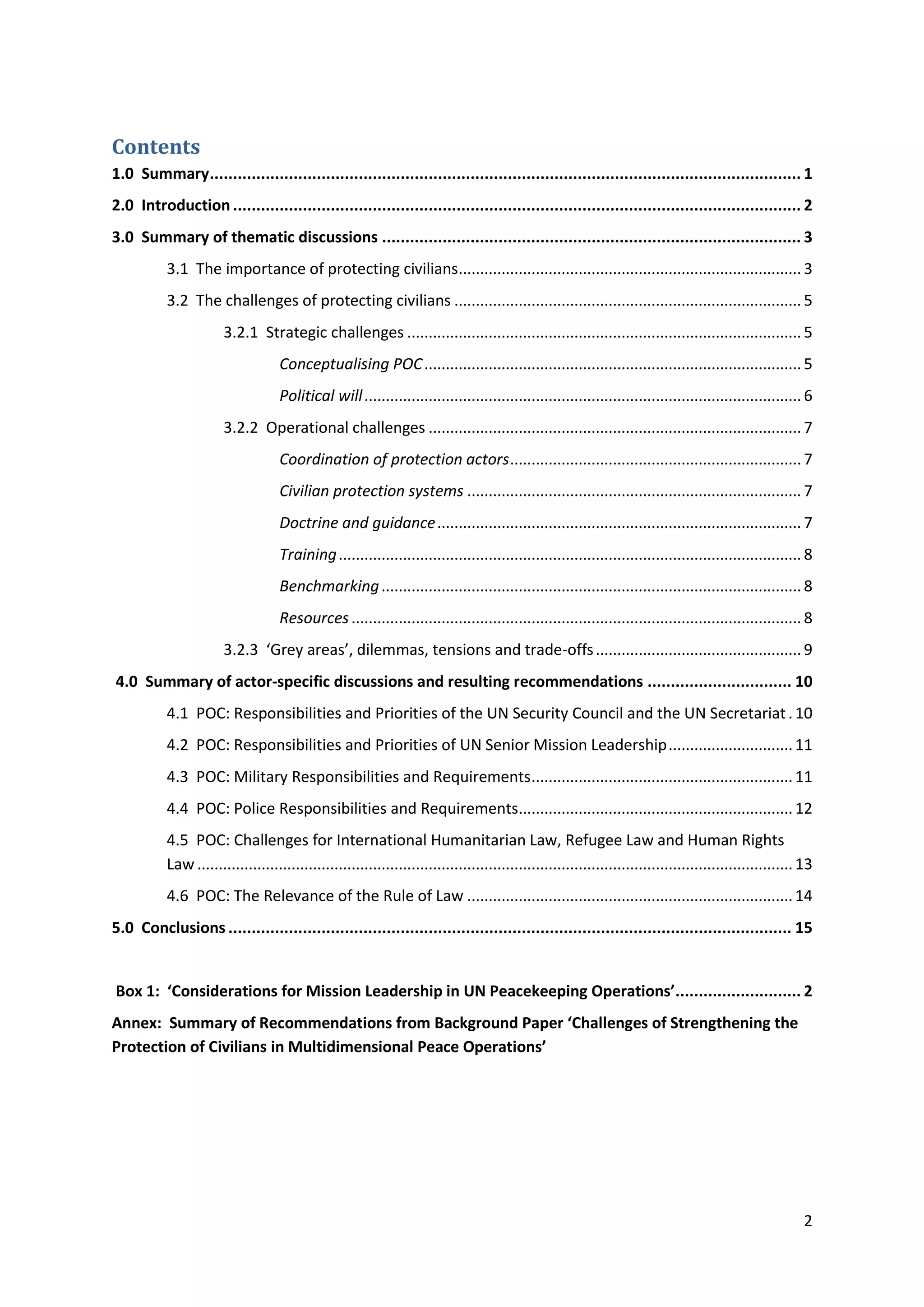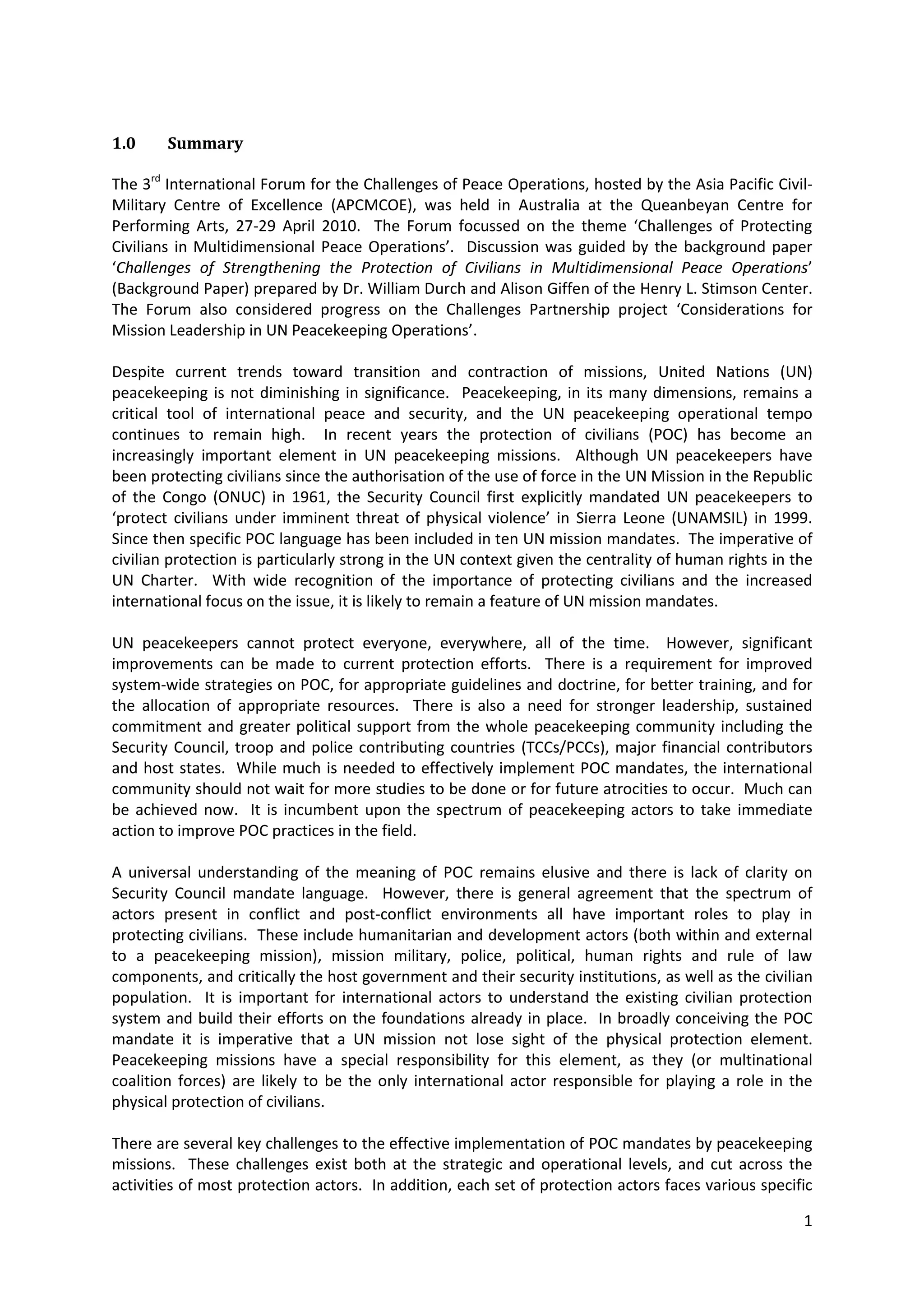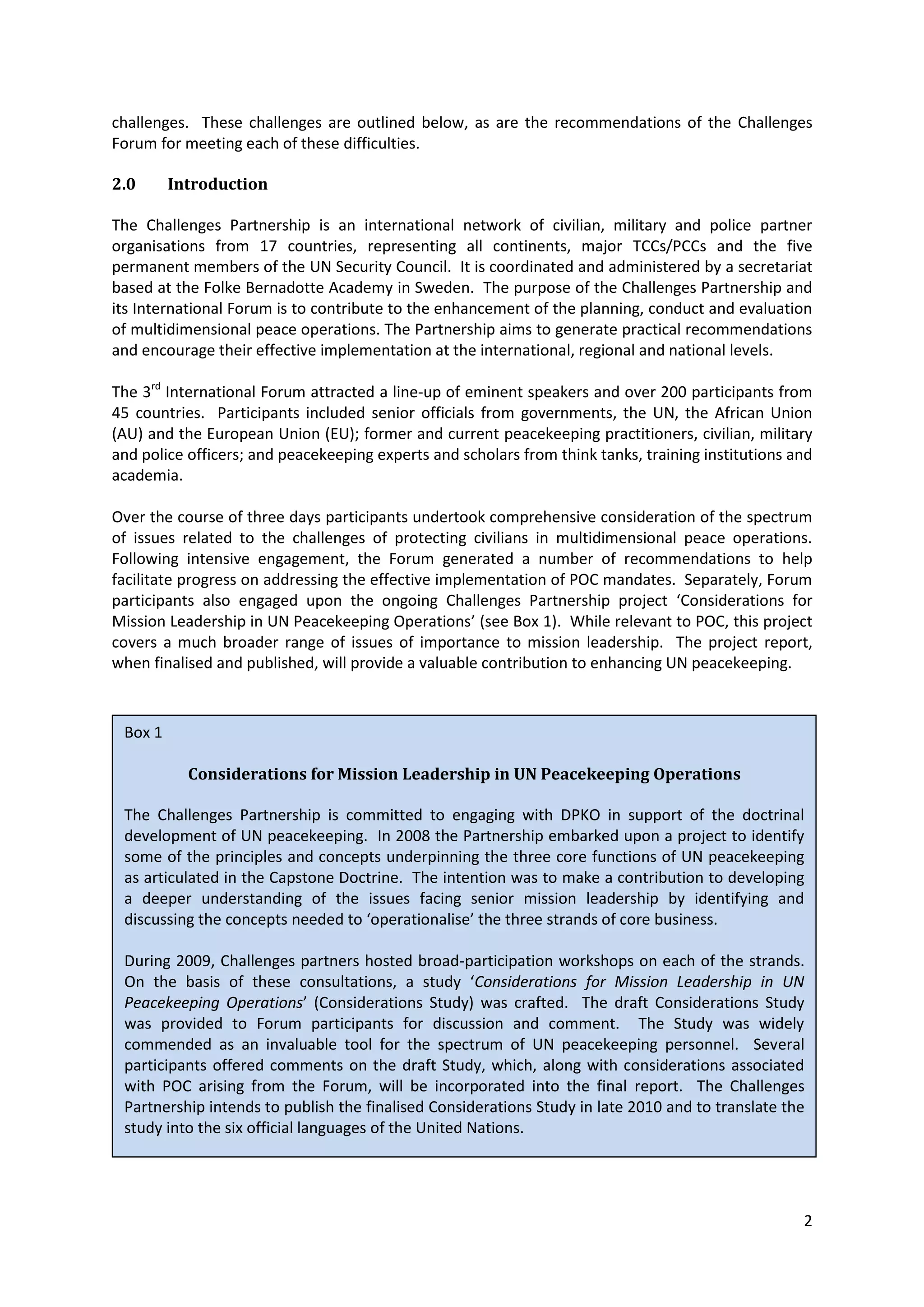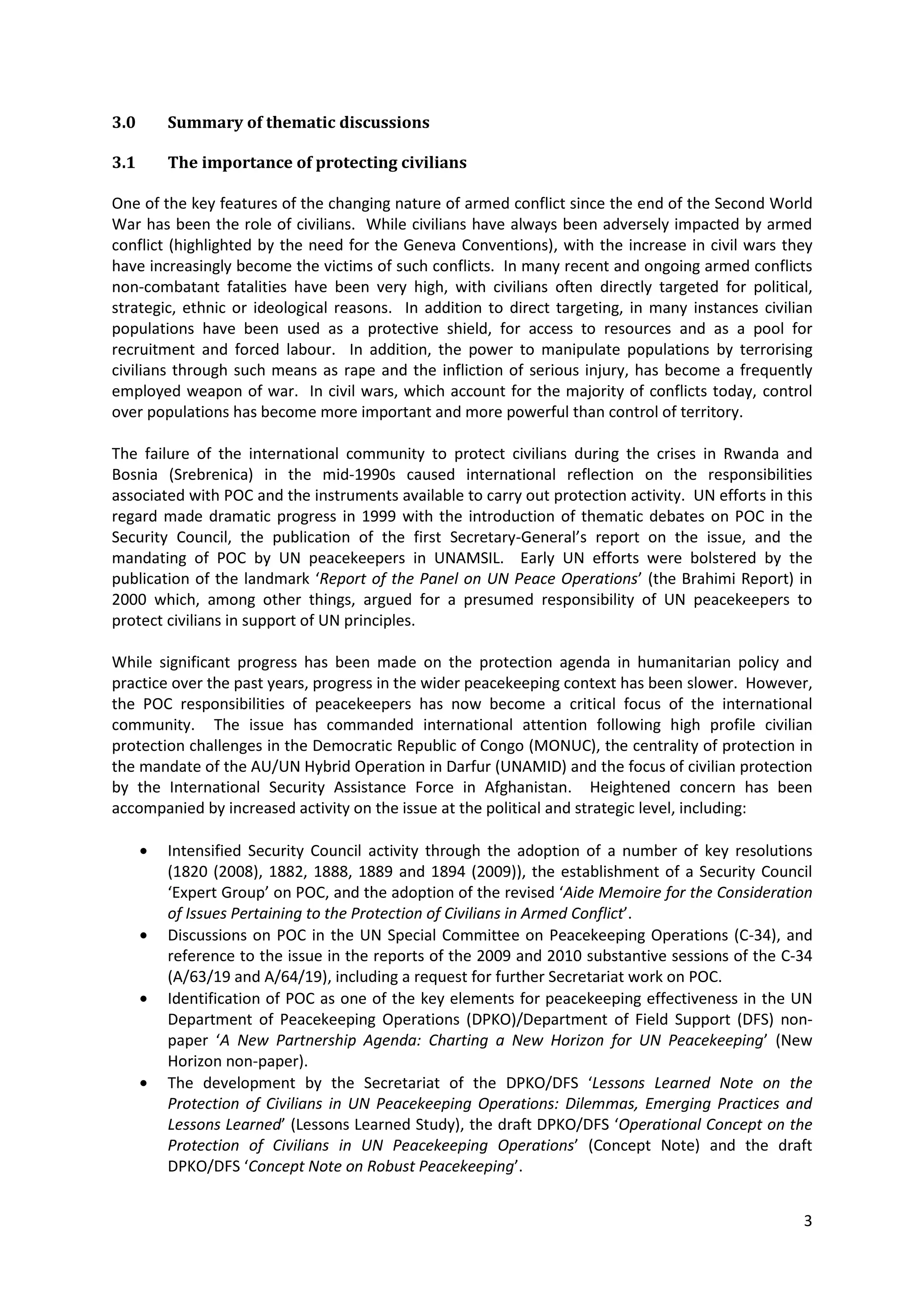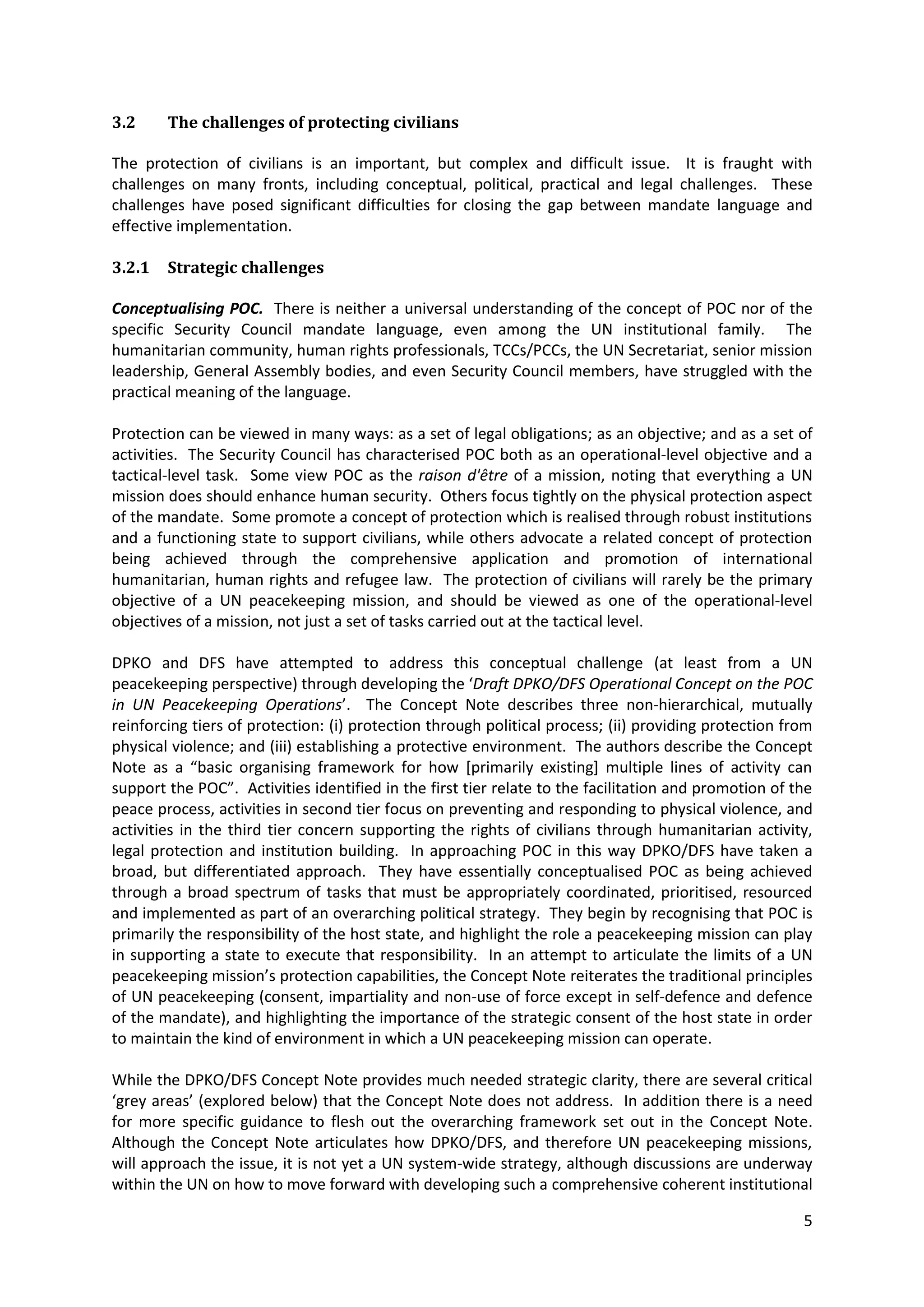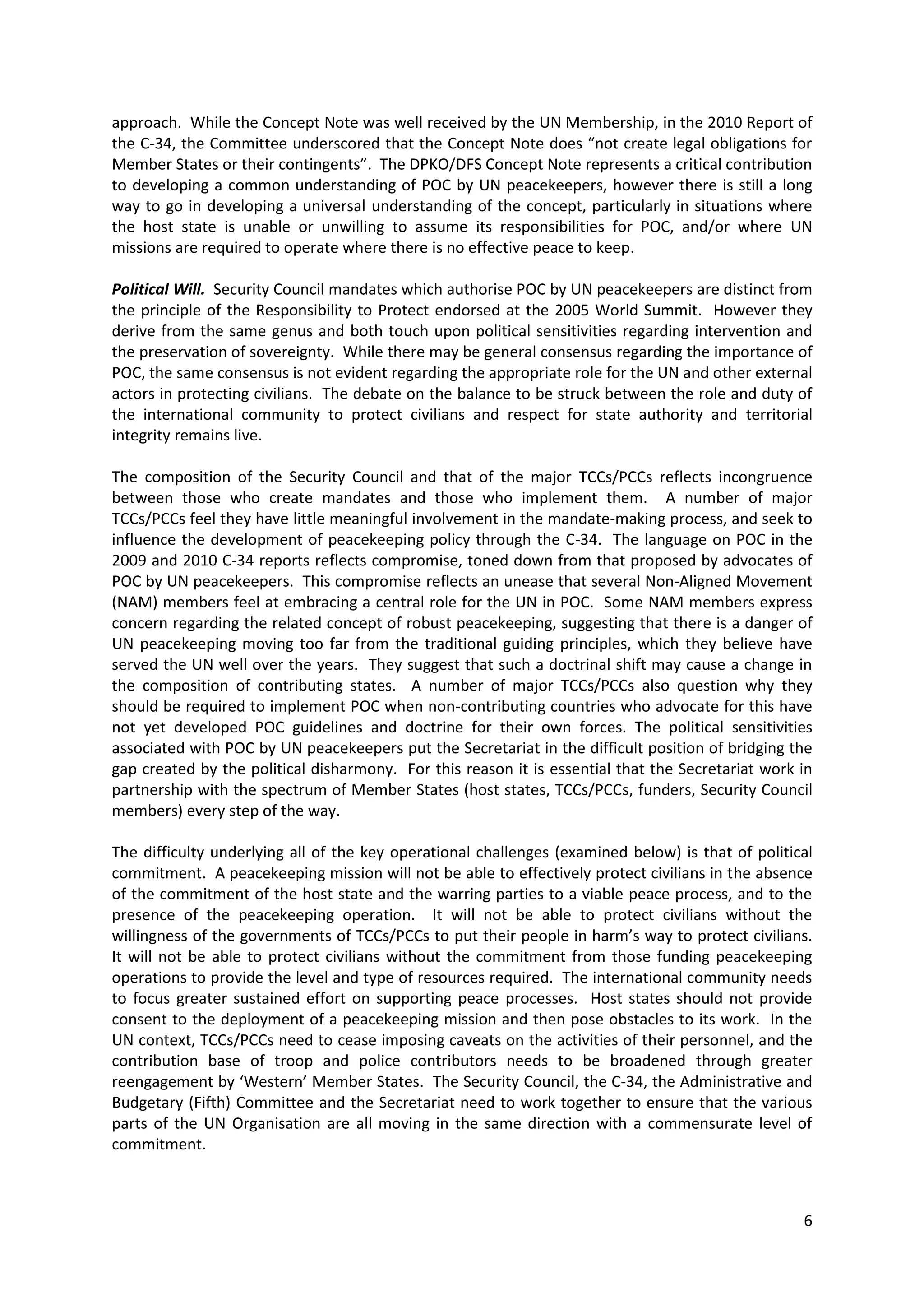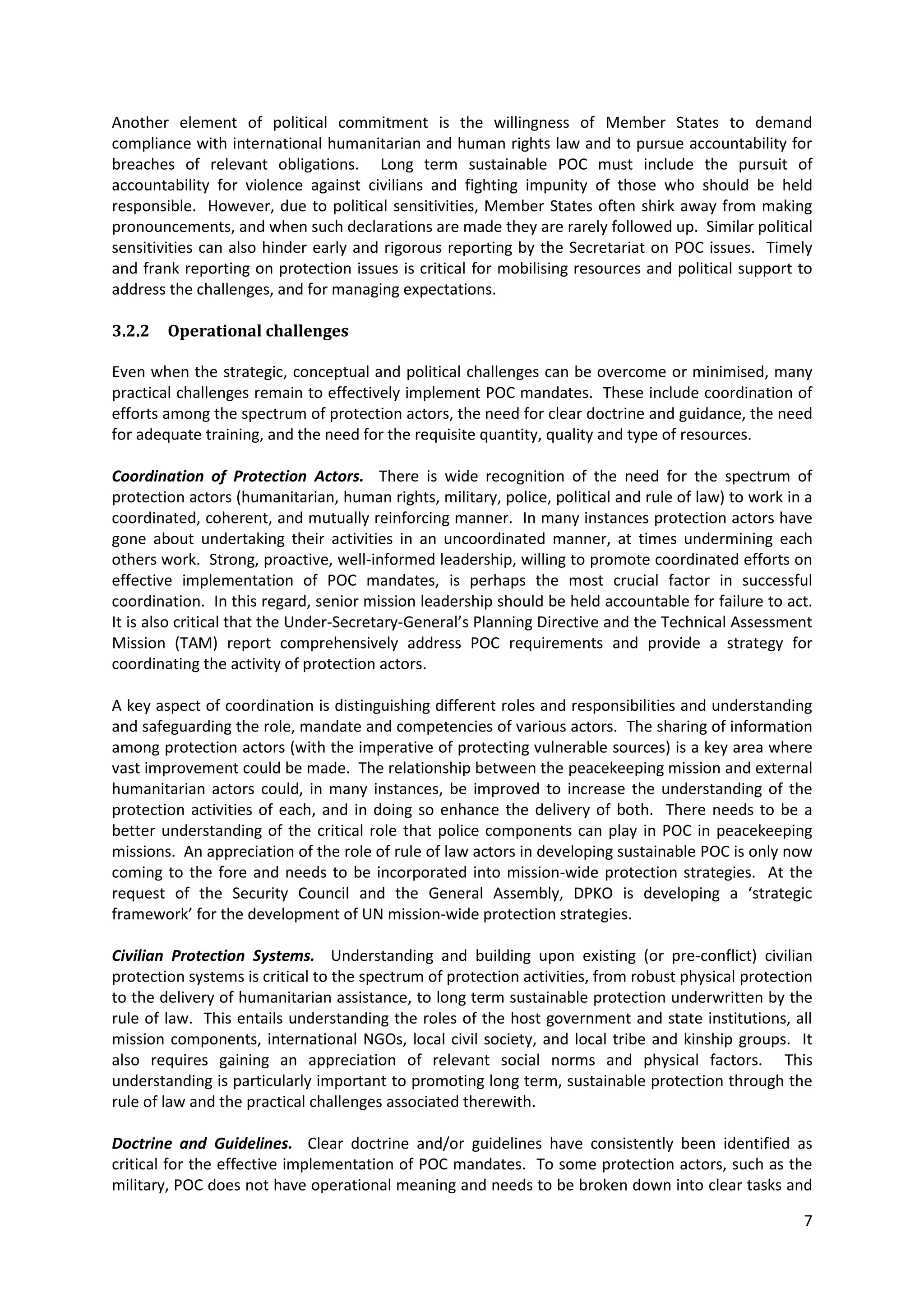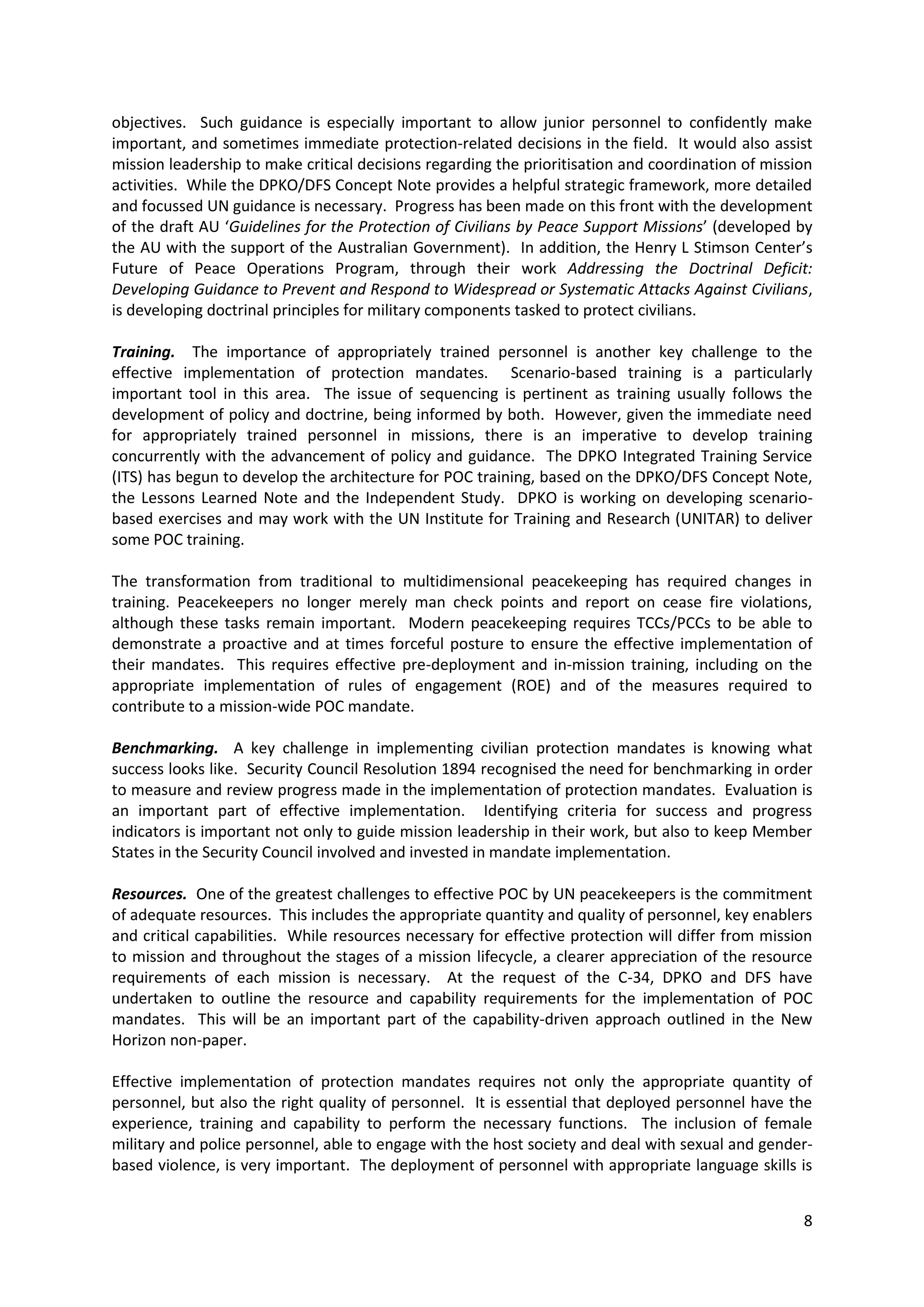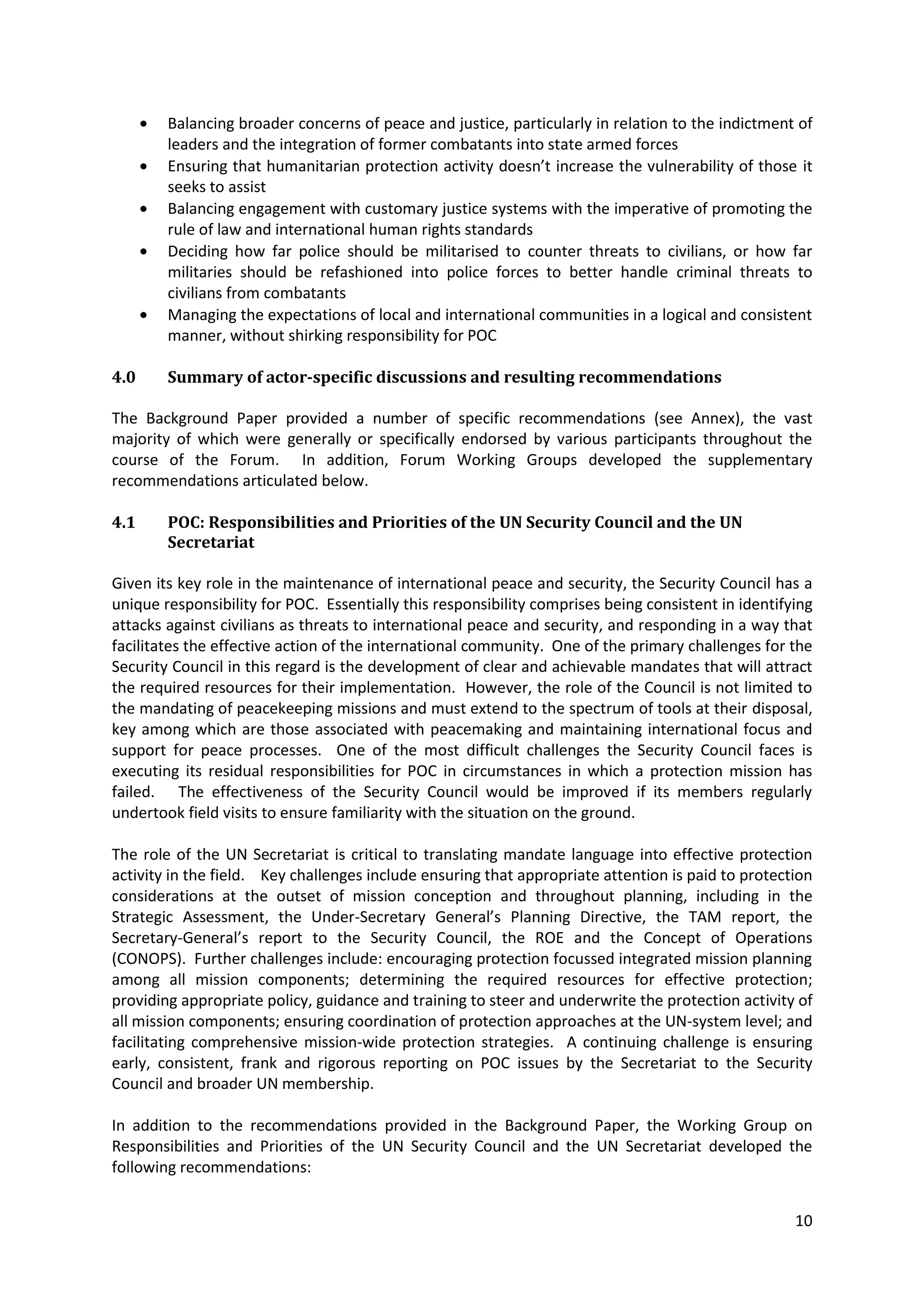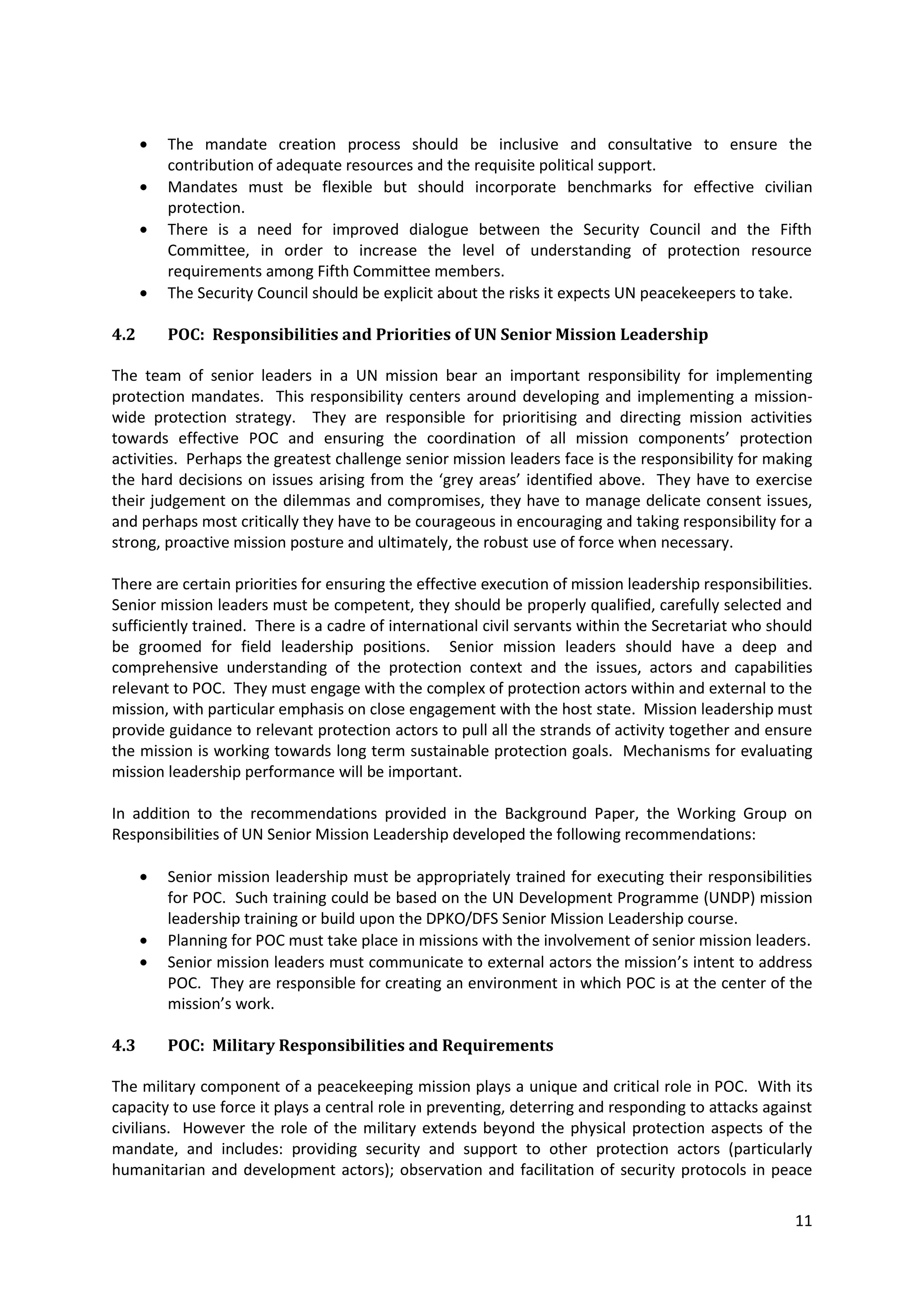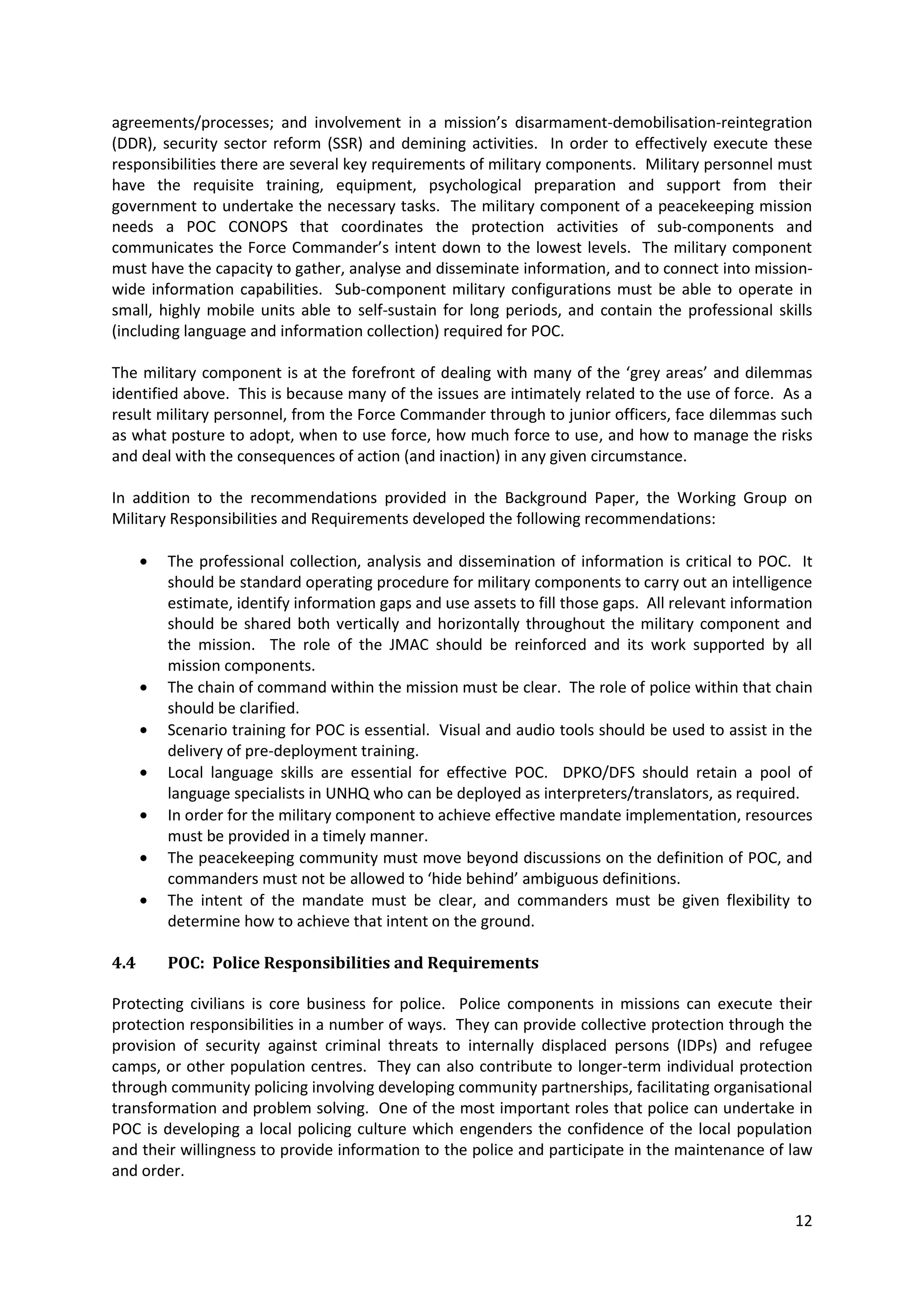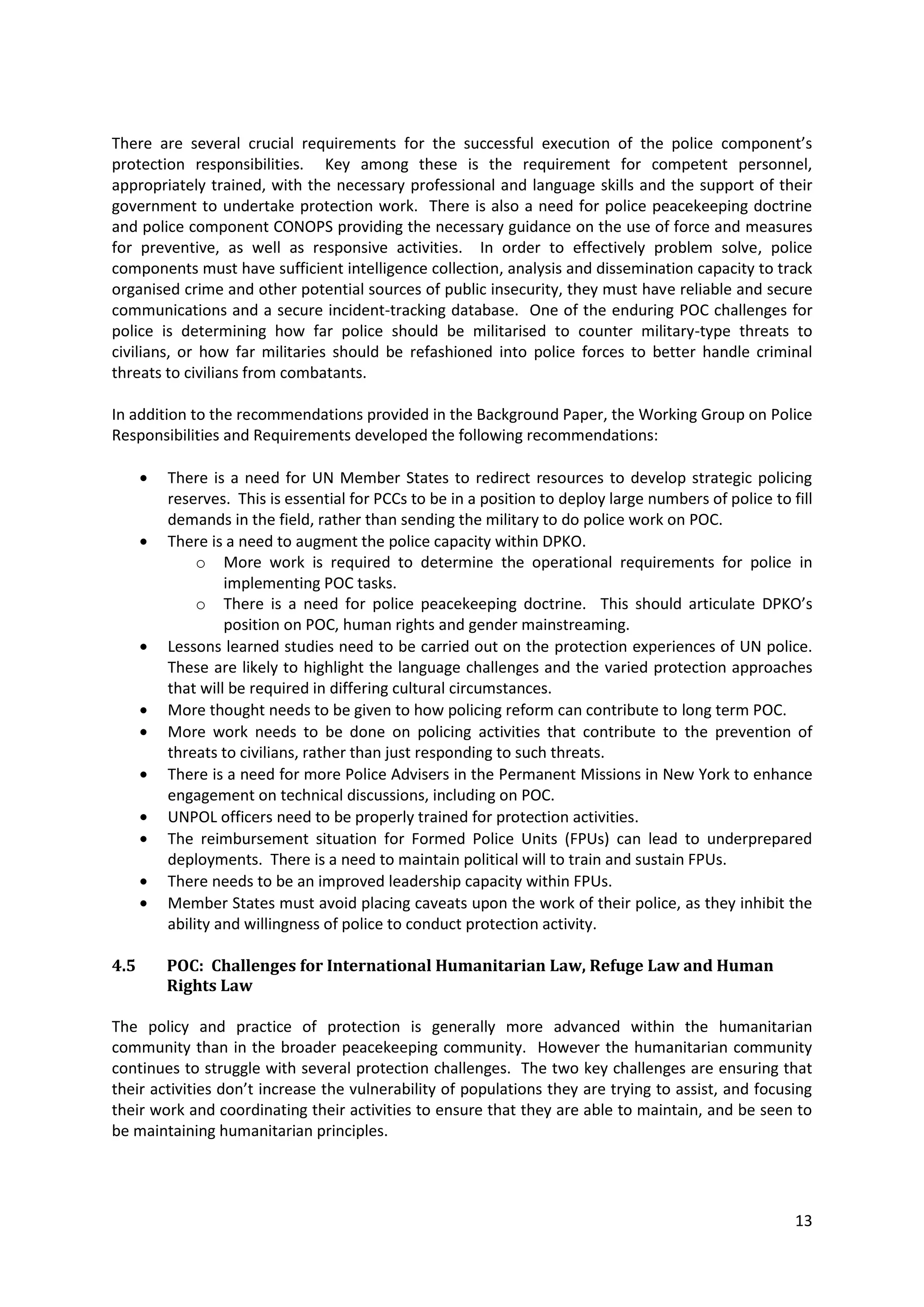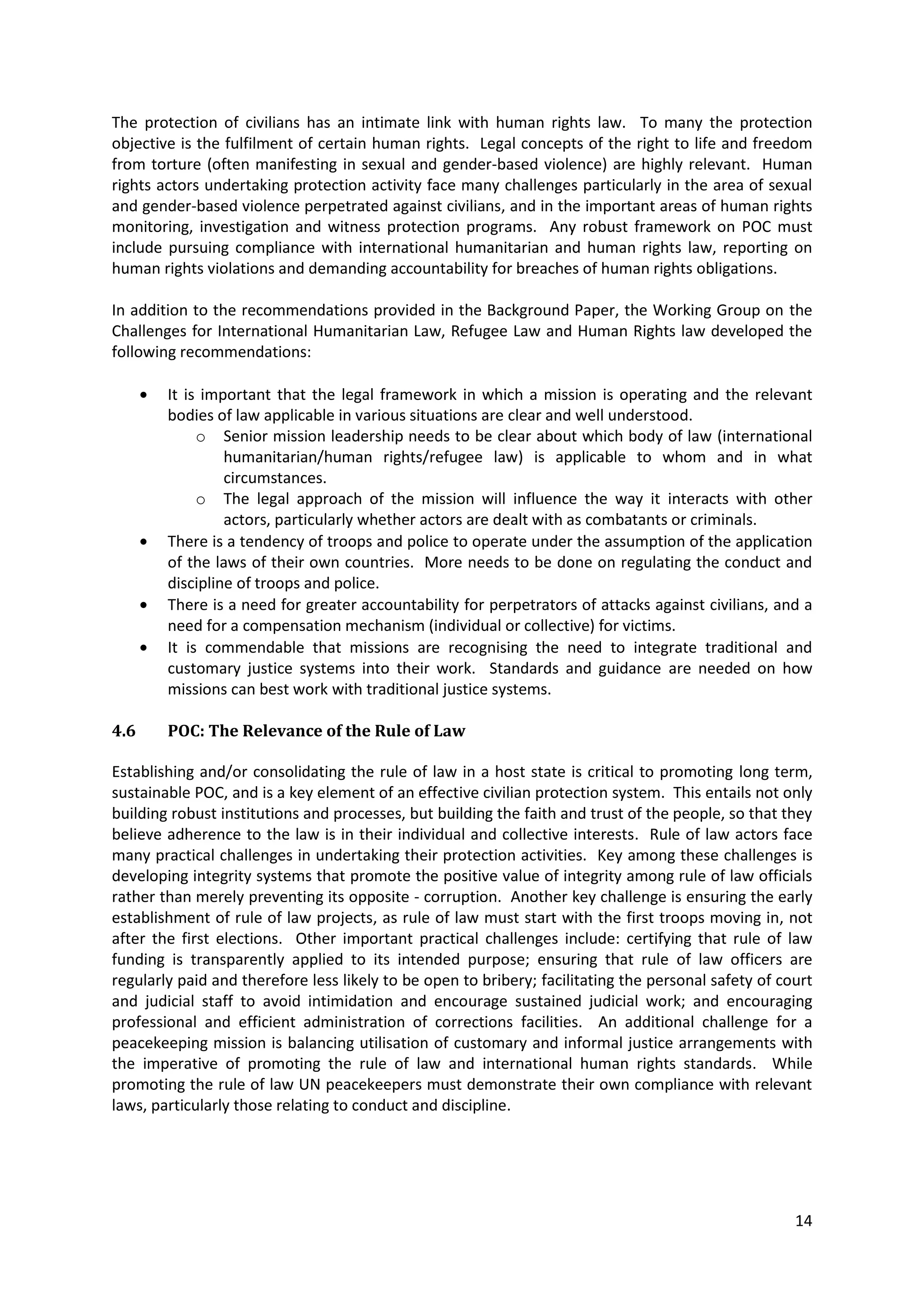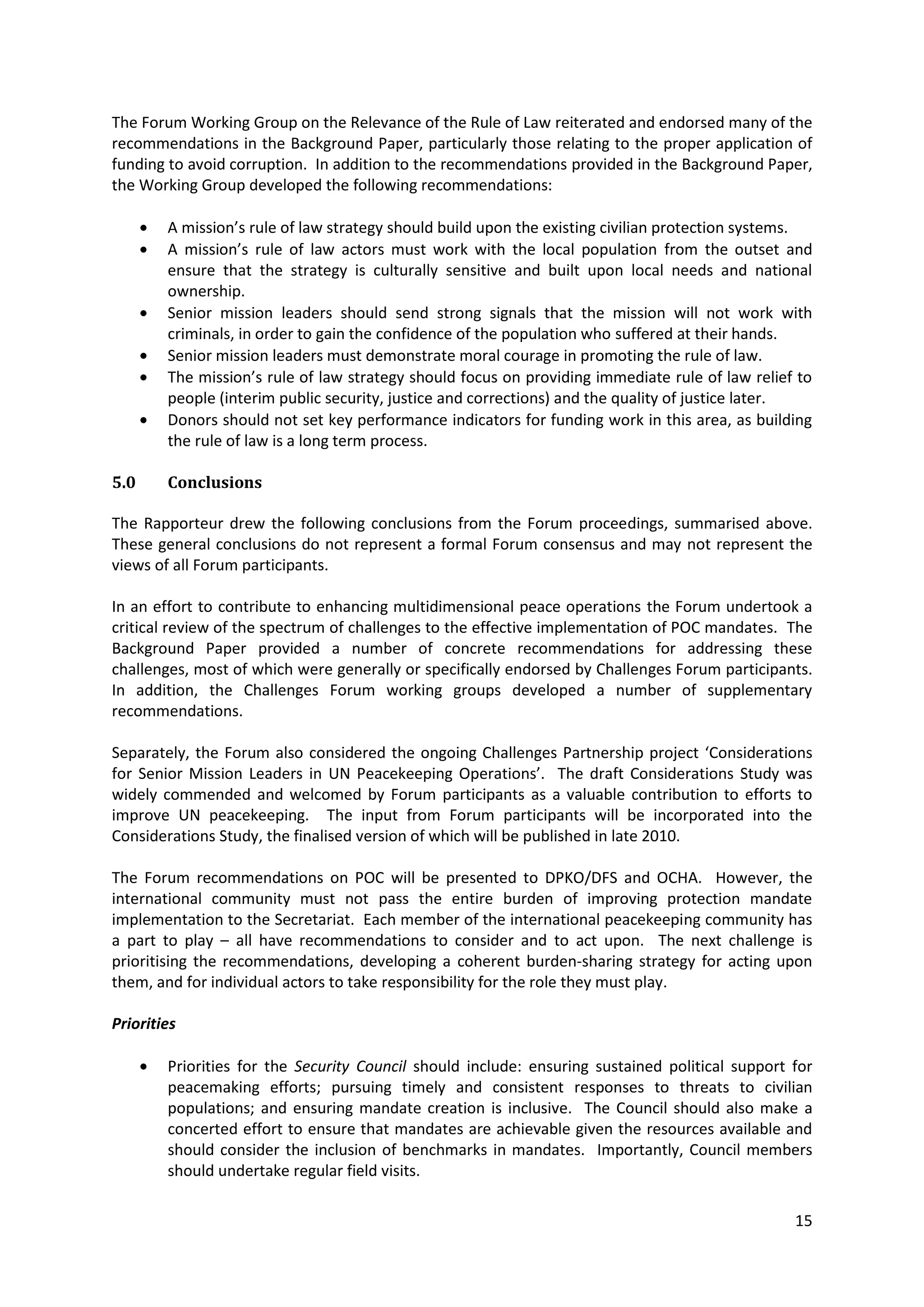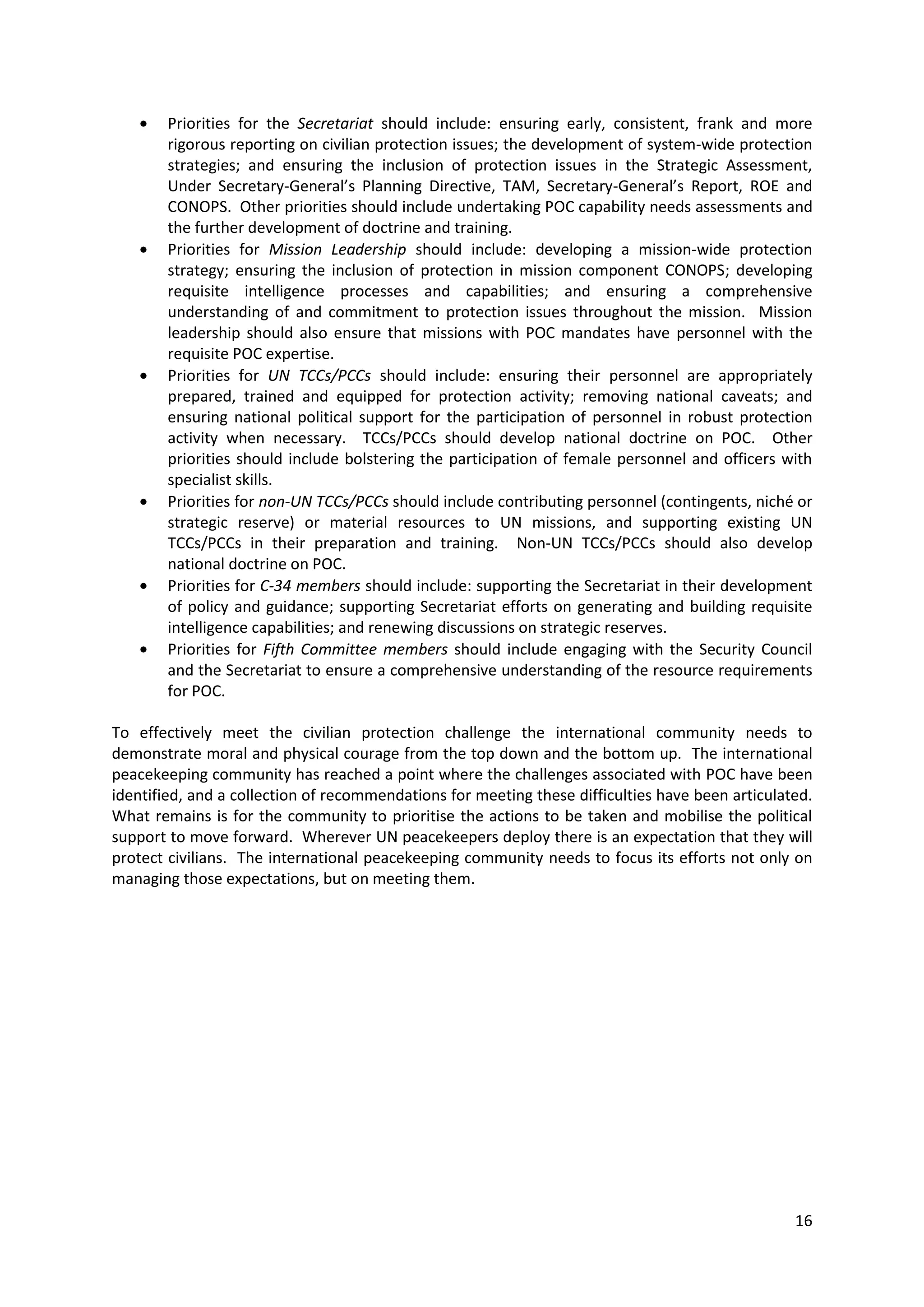The 3rd International Forum for the Challenges of Peace Operations held in April 2010 in Queanbeyan, Australia, focused on the complexities of protecting civilians in multidimensional peace operations. The forum generated discussions on the importance of civilian protection, the challenges faced, and outlined recommendations for enhancing the effectiveness of peacekeeping efforts. It emphasized the need for immediate action from various actors involved in peacekeeping to improve civilian protection practices, as well as the ongoing commitment from the international community.

